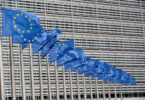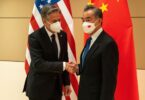All Pakistan Textiles Association (APTIMA) Punjab Chapter Chairman Adil Bashir has asked the government to implement the incentive of postponement of payment installments of all loans for a period of one year and the standard operating procedure for resuming the industrial production to protect the jobs of currently employed workers. Textile is the main engine of growth in the manufacturing sector in terms of providing employment and foreign earnings from exports.
APTIMA demand for the implantation of adhoc monetary incentives in the shape of postponement of loans repayment is justified and there should be no bureaucratic delays. However, textile sector need long terms incentive package to reap the fruits of strategic export policy. Prime Minister Imran Khan has already accorded approval to the overambitious textiles export policy 2025.
The policy envisages a high jump in exports to $28 billion in the next five years by 2025. Currently exports of cloth, knitwear and readymade garments have remained stagnant at $3.8 billion, securing a share of 1.6 percent in the global textile market.
Efforts shall be made to increase it to 3 percent or $7 billion in absolute terms in the next fiscal year. It is really a million dollars question as to how this quantum leap can be taken in the prevailing situation of unfavourable input-output ratio which make the value added products less competitive in the international market. It is the reasonably low cost of factors of production including technology, highly skilled labour and inputs such as raw material and above all prices of energy inputs that give competitive edge to exports in the international market.
Under the textile export policy, the electricity and gas tariffs will remain fixed at 7.5 cents per unit and 6.5 cents per mmbtu for the next five years. Provision of electricity on subsidized tariff for such a long period seems impossible if power sector reforms for achieving optimal energy mix are not implemented. Can these reforms be done without addressing the issues of inflated tariff allowed to IPPs, curbing the well-entrenched culture of electricity bills default and rising technical losses in the transmission and distribution system? How can the impact of imported RLNG from Qatar at$13 mmbtu and distribution network losses be minimized to provide gas at subsidizes price?
The induction of new technology will necessitate skill building of existing workers employed in the textile sector and creation of new pool of workers to cater to the increasing demand for manpower. As the labour cost in Vietnam has gone up therefore South East Asian countries are keen to shift their textile unit in pursuit of cheap labour in Pakistan.
The targets set in the textile export policy can be realised only when the input-output ratio of textile products is made favourable with facilitating raw materials producing industry, technology improvement; skill building, lowering energy cost and products innovations. Not a single cotton crop is grown in Bangladesh but by virtue of low cost of other inputs it exports textile products worth $27 billion to world market, which accounts for 28 percent share of the textile market of $302 billion.






